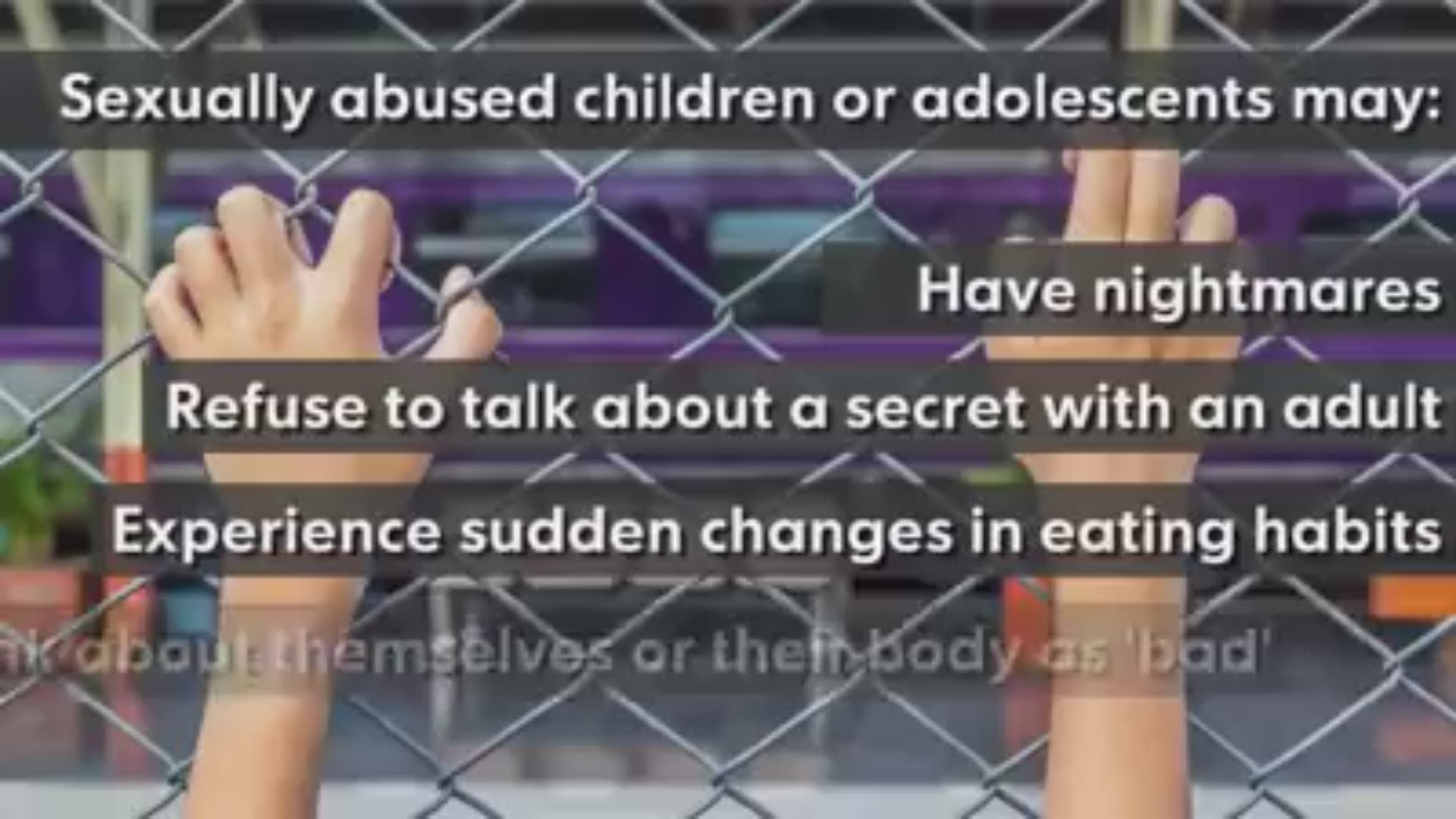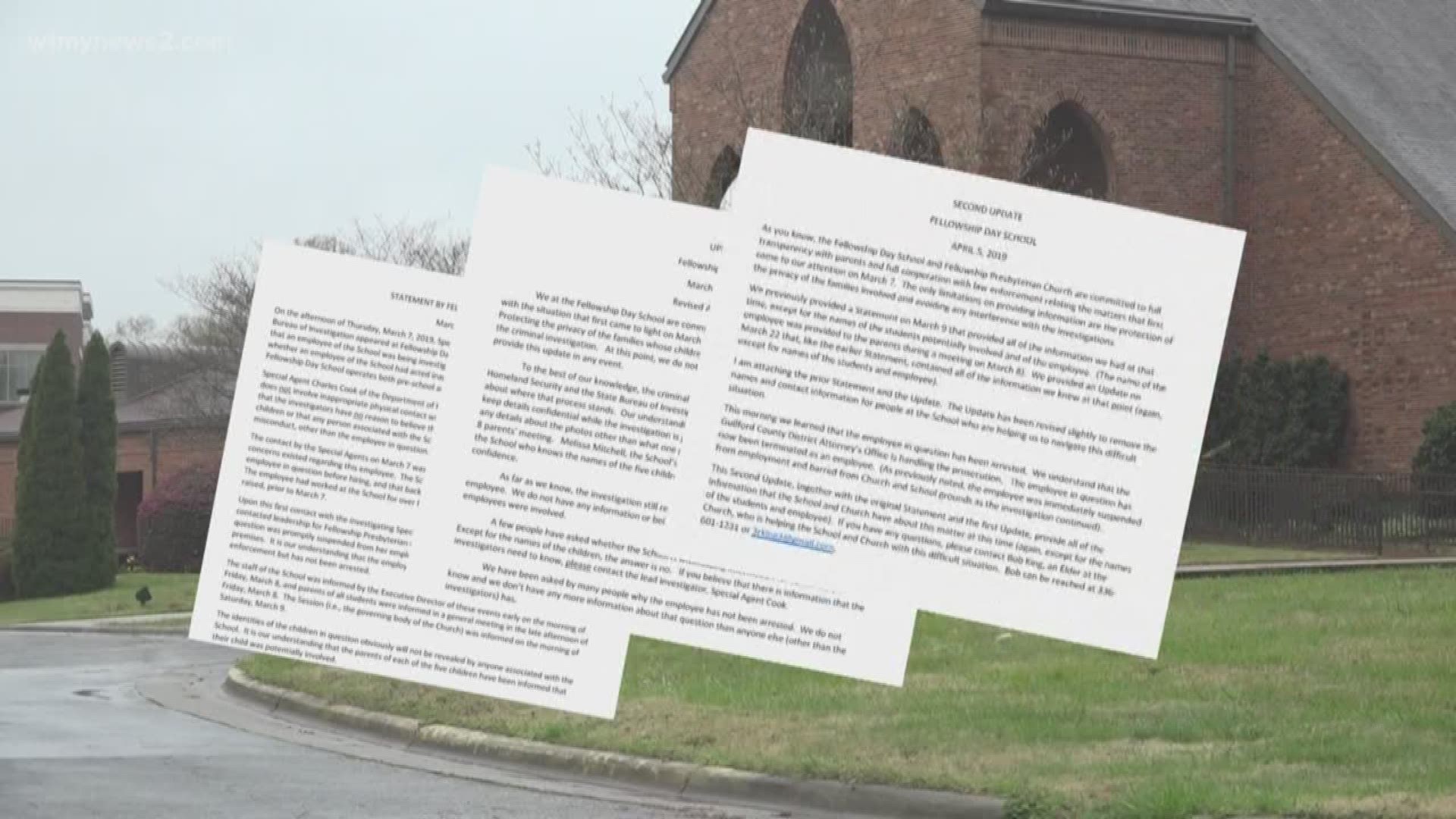GREENSBORO, N.C. — Every 9 minutes a child is sexually abused according to the RAINN organization.
Every day decisions are made as to whom you leave your child with. Are they being protected?
Child sexual abuse can happen with a family member, a sibling, another relative or outside the home from a teacher, caregiver, or a stranger and the list goes on.
But you can help stop child abuse in its tracks by reporting it, knowing the signs and symptoms, and knowing how to get support to a child.
WFMY News 2 reached out to the Greensboro Police Department to find out about what’s called, “Child Grooming,” or “Grooming.” Here are their answers to our questions.
Q: What is Child Grooming?
A: Child Grooming is similar to the techniques abusers use in all Domestic Violence and Sexual Assault and Elder Abuse cases. Grooming is when a predator begins the process by which they attempt to develop emotional bonds with a child in order to later manipulate them into sexual activity, either through sexual assault or sexual human trafficking. It is through this emotional bond that predators isolate, control and make the child dependent on the offender.
Q: What are the specific steps a child abuser takes in an effort to build a child’s trust in an abusive situation?
A: Most predators start the process by identifying and targeting a specific victim. This can be done by trolling areas where children play, go to school or hang out. It can also be done online through chat rooms, gaming and social media apps. This “hunting” phase enables the predator to determine behavior, emotions and statements made by a child that can be manipulated later. The predator also looks for avenues of being alone with the child, the relationship with the child has with parents, friends, neighbors and how that can be used. Developing Trust and access is the next phase where the initial interaction occurs with the child, this can be a friend request, opening a chat with the child, playing games with the child (online or at a local park) or providing them rides, treats, presents. This is designed to build trust through appearing to be the only one that understands them and is routinely a “sympathetic ear”. This continues until the individual plays a more important role in the child’s life. The predator continues to develop the trust but also expresses their relationship as the most important thing in the child’s life. This can be done with statements like, “I can’t live without you. I don’t know what I’d do to myself if you stop talking to me.” These are all ways to make the child more and more tied to the predator. The next step is isolating the child from friends and family. The previous steps have set up the relationship to the point where the child depends on the predator and feels that they are the only one they can trust. This isolation then develops into secrecy and lying in order to cover up the previous stages. The child then becomes conflicted, scared and unsure of their selves which allows the predator to continue “grooming” the child for their intended purpose. The last two stages are when the predator initiates a sexual relationship with the child which overwhelms them psychologically and emotionally making them easier to manipulate and control. This then evolves into the predator controlling the relationship through threats, intimidation, guilt or force. This is also seen in many cases of Domestic Violence and Elder Abuse relationships.
Q: What actions should be taken to report abuse?
A: In many instances, witnesses of abuse are unsure of how to become involved or even report. Many are unsure if what they are witnessing is criminal in nature. The biggest thing is that if a witness of abuse feels uneasy about what they are seeing some intervention needs to be made. This can be done by counseling, contacting Child Protective Services (anonymously if necessary), and school employees. If contact is being made online, contacting the app or social media platform can also start the investigation.
Q: What should you do if a family member is involved in the abuse?
A: If a suspected family member is the predator law enforcement and Child Protective Services should be contacted immediately. The child’s safety is of paramount importance and they need to be removed from the unsafe environment as soon as possible.
Q: How can I recognize if my child is being abused? What are the signs parents should look for?
A: Recognizing abuse can be difficult because every individual (child or adult) deals with trauma in different ways. More often than not, children will become withdrawn, lethargic, and isolated themselves. They may have over the top negative reactions to certain individuals, hiding, screaming, crying, shaking, etc. Smaller children may show indications of sexualized play, touching other children or adults inappropriately or bleeding or infections from private areas. With older children, repeat running away, schoolwork suffering, isolating themselves to the computer or social media are other ways to see issues.
Q: What resources are out there for parents whose child is a victim of abuse?
A: Local resources for child abuse can be found within the Family Justice Center Partnership. Programs such as child advocacy through the Family Services of the Piedmont, counseling through the Kellan Foundation, Forensic Interviewing through the Child Advocacy Center, Legal protection through the Guardian Ad Litem Team and Protection Orders through the Sheriff’s Department and Criminal Investigations through the Greensboro Police Department. These families are navigated through all the services at the Family Justice Center and can make referrals to other services if needed.
A LIST OF CHILD ABUSE RESOURCES
If you suspect a child is being abused or neglected, or think a child could have died from being mistreated, you must report what you know to the county Department of Social Services. This is according to the law. Do not be afraid to report it as long as you are acting in good faith, you cannot be held liable.
Types of Child Abuse
- Physical Abuse - injuring a child by hitting, kicking, shaking, or burning, etc. him/her; also includes throwing objects at the child.
- Emotional Maltreatment - crushing a child's spirit with degrading derogatory verbal attacks, threats, or humiliation.
- Sexual Abuse - sexual contact with a child (incest, inappropriate touching, rape); pornographic use of a child.
- Neglect - failure to provide for a child s physical or emotional needs (food, clothing, shelter, medical care, physical or emotional attention); failure to provide guidance or supervision, abandonment.
Recognizing Child Abuse
The Child:
- Shows sudden changes in behavior or school performance;
- Displays overt sexualized behavior or exhibits sexual knowledge that is inconsistent with their age;
- Has not received medical attention for a physical injury that has been brought to the parents' attention;
- Has learning problems that cannot be attributed to specific physical or psychological causes;
- Is always watchful, as though preparing for something bad to happen;
- Is overly compliant, an overachiever, or too responsible;
- Comes to school early, stays late, and does not want to go home; or
- Has unexplained burns, bites, bruises, broken bones, or black eyes;
- Has bruises or marks in non-prominent, “fleshy” areas of the body (for example, inside of biceps or behind the knees);
- Has fading bruises or other marks noticeable after an absence from school;
- Seems frightened of the parents and protests or cries when it is time to go home from school;
- Shrinks at the approach of adults;
- Reports injury by a parent or another adult caregiver.
The Parent or Other Adult Caregiver:
- Shows little concern for the child, rarely responding to the school's requests for information, for conferences, or for home visits; denies the existence of or blames the child for) the child's problems in school or at home; asks the classroom teacher to use harsh physical discipline if the child misbehaves; sees the child entirely bad, worthless, or burdensome;
- Demands perfection or a level of physical or academic performance the child cannot achieve;
- Offers conflicting, unconvincing, or no explanation for the child's injury;
- Describes the child as "evil," or in some other very negative way;
- Is abusing alcohol, prescription drugs or illegal drugs and that abuse is having an adverse impact on the child;
- Uses harsh physical discipline with the child; or
- Has a history of abuse as a child.
Recognizing Child Neglect
The Child:
- Begs or steals food or money from classmates;
- Lacks needed medical or dental care;
- Lacks age-appropriate adult supervision ;
- Lacks clothing appropriate for the weather;
- Reports family violence in the home;
- Reports use of illegal substances or excessive use of alcohol by parents or caregivers (for example, to the point the parent passes out);
- Abuses alcohol or other drugs; or
- States there is no one at home to provide care.
The Parent or Other Adult Caregiver:
- Appears to be indifferent to the child;
- Seems apathetic or depressed;
- Is involved in an abusive domestic relationship;
- Behaves irrationally or in a bizarre manner; or
- Is abusing alcohol, prescription drugs or illegal drugs.
For Parents Who Need Help
Asking for help is a sign of strength. Call Prevent Child Abuse North Carolina at 1-800-CHILDREN. They can put you in touch with someone who can offer support and help. Or contact your:
- Family Physician or Pediatrician
- Mental Health Center
- Health Department
- 1-800-4-A-CHILD a National Child Abuse Hotline)
You should report child abuse to DSS.


